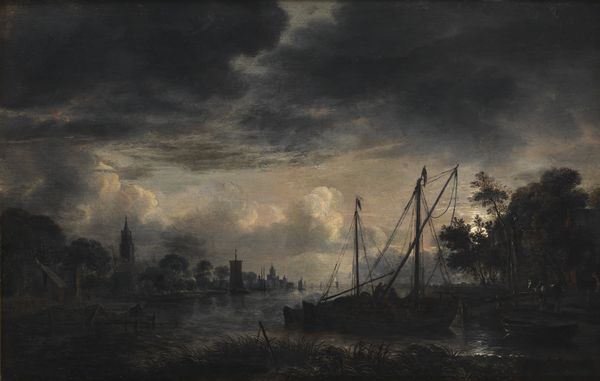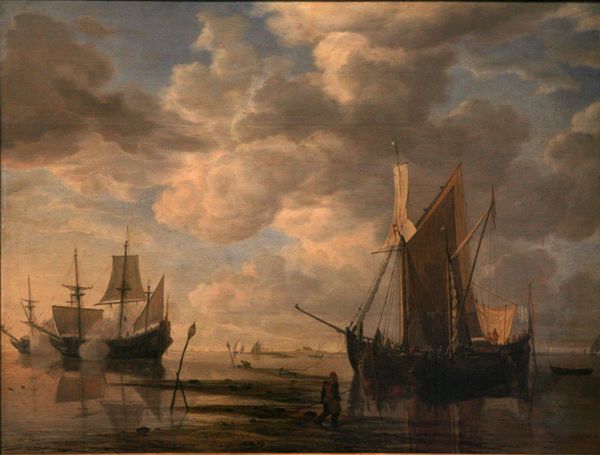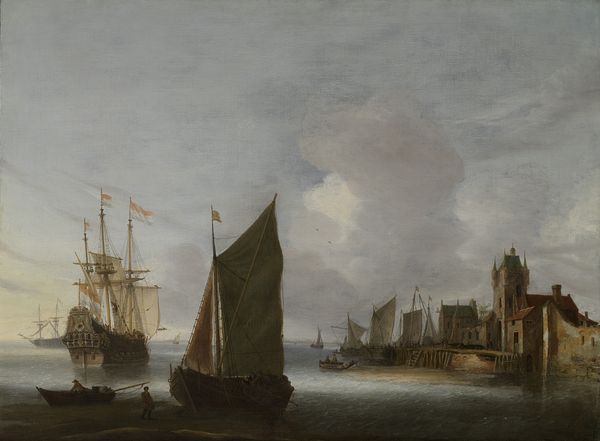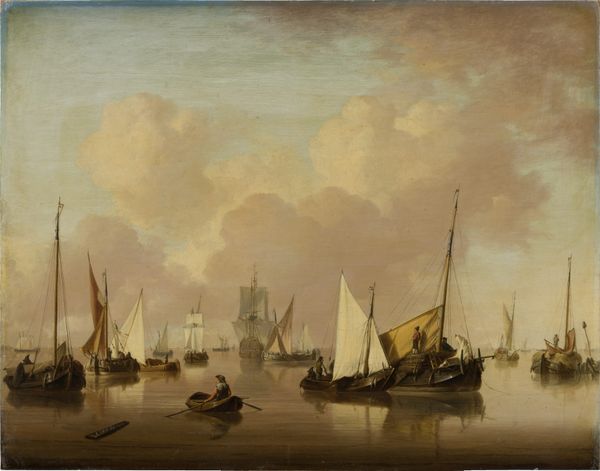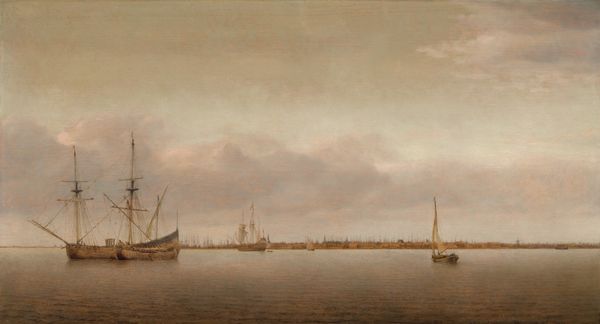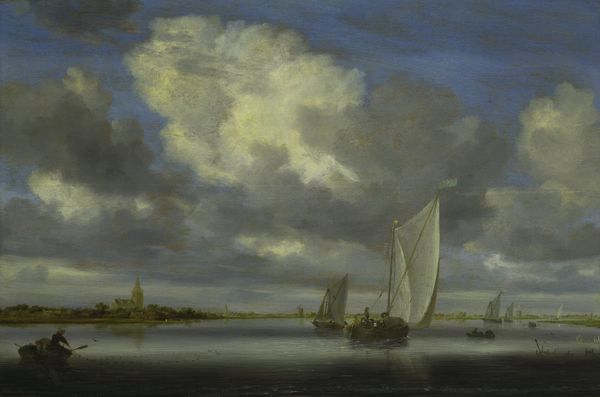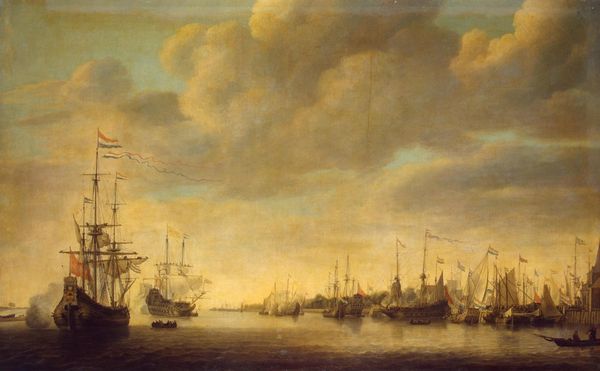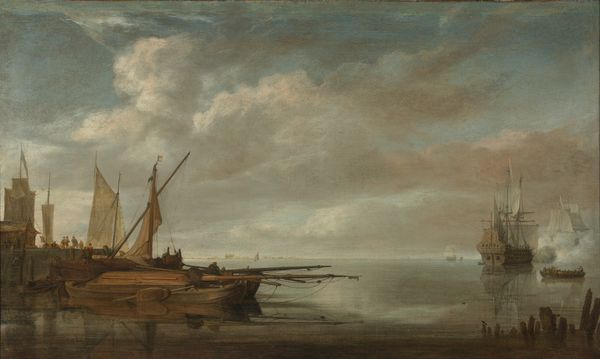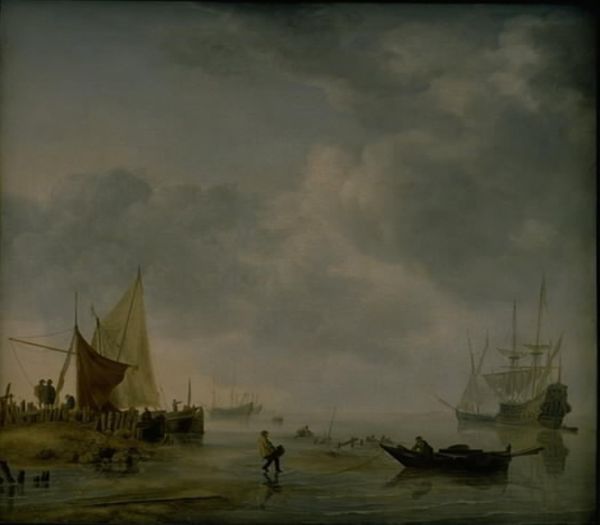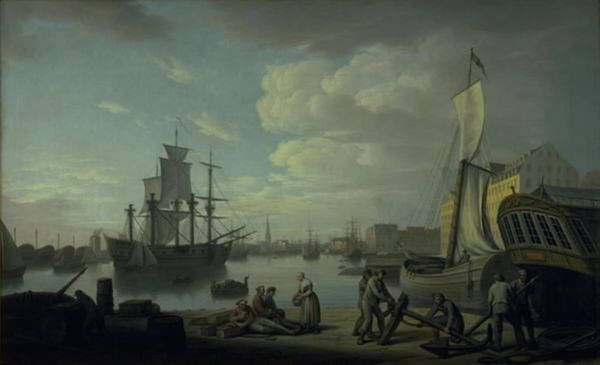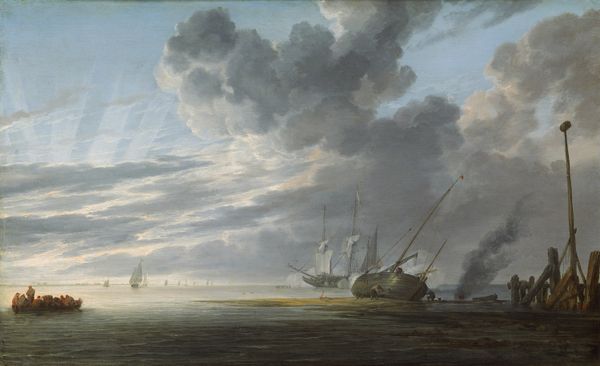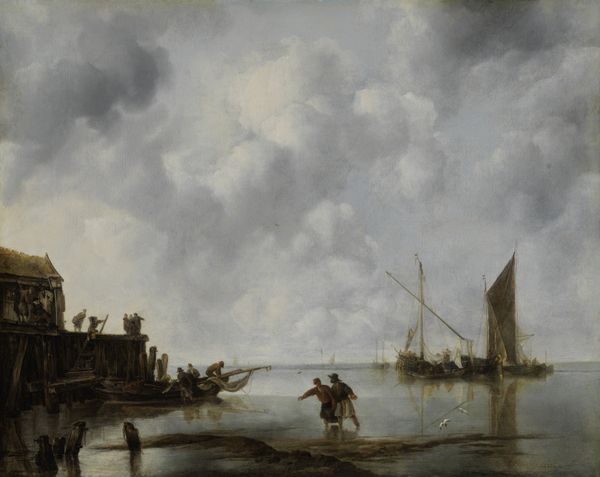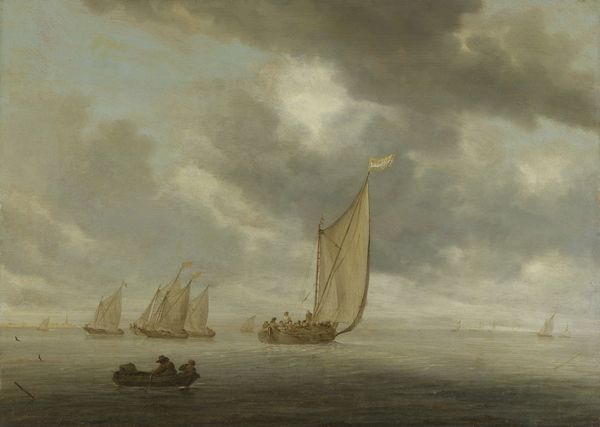
painting, oil-paint
#
baroque
#
dutch-golden-age
#
painting
#
oil-paint
#
landscape
Dimensions: overall: 18.42 × 26.67 cm (7 1/4 × 10 1/2 in.) framed: 29.21 x 36.83 cm (11 1/2 x 14 1/2 in.)
Copyright: National Gallery of Art: CC0 1.0
Curator: Anthonie van Borssom's oil painting, River Scene with Windmill and Boats, Evening, dates from around 1645 and epitomizes Dutch Golden Age landscape painting. What are your initial thoughts? Editor: It feels incredibly peaceful, almost melancholic. That diffused, dusky light creates a stillness. I imagine the sounds would be muted – just the water lapping and the creak of the windmill. It's a moment suspended in time. Curator: Indeed. Note how the artist meticulously constructs this calm by layering paint. Observe the application of the oils, building texture in the foreground to contrast with the smoother, reflective water. Consider too, the social significance: windmills represented Dutch innovation and industry during a period of growing economic power. Editor: The windmill grounds it, literally and figuratively, rooting the dreaminess in something practical, something built. But I am mostly taken by how Borssom manipulates the light. He invites the sun to meet with darkness, and you get that briefest moment of peace as they entwine with each other. You can almost feel that still air, that quiet after work before the wind rises and brings the storm. Curator: Exactly. It evokes both the tranquility and the economic activity of the period. The composition guides the viewer’s eye—from the tangible details of the near shore toward the ethereal, boundless horizon, cleverly merging representation with suggestion. Notice how Van Borssom guides our gaze with color and composition in tandem, a reflection of the prevailing class structures and access to resources through commerce of the time. Editor: And, in some strange way, it resonates even now. Doesn’t it speak to something essential in the human spirit to be connected to land, connected to that meeting of light and darkness? Curator: Certainly, these landscape paintings reinforced national identity and celebrated the Netherlands' unique geography and industry. But also, their trade networks. The water wasn't just pretty, it connected this small nation to the rest of the globe. Editor: A stunning visual record of human ambition at its finest, interwoven with natural splendor. Curator: Quite right, art reflects more than aesthetics – labor, ingenuity, commerce. A compelling encapsulation of its era.
Comments
No comments
Be the first to comment and join the conversation on the ultimate creative platform.
